In the tapestry of martial arts, I Liq Chuan (意力拳) emerges as a distinctive thread, weaving together the ancient and the modern. I Liq Chuan draws from a wellspring of principles often associated with the so-called “internal arts,” with its roots in two rare styles of Xingyiquan (鳳陽形意拳) and Baguazhang (如意八卦掌). Not much is known about either, and both appear to be extinct except what little remains embedded within I Liq Chuan’s partner training methods.
Referred to as the “Martial Art of Awareness,” it has gained a reputation for revealing the secrets of the old masters. Emphasizing mindfulness, the integration of mind and body, and an almost scientific exploration of self, I Liq Chuan’s curriculum is logically structured, allowing for a systematic progression in learning. Through unique training methods and a focus on tangible and measurable results, it offers an approach that reaches people from all walks of life, particularly those seeking a deeper understanding of movement, balance, and the nature of what it really means to be a human being. Under the watchful eye and guiding hand of Grandmaster Sam Chin, the popularity of I Liq Chuan has surged. With schools now operating in more than 20 countries around the globe, GM Chin’s gravitas inspires practitioners across continents, transcending borders, cultures, and languages.
What sets I Liq Chuan apart within the crowded landscape of Chinese martial arts is twofold: First, there’s the magnetic presence of GM Sam Chin, a man whose existence embodies the very best of what martial arts have to offer; his full-contact fighting record and innovative teachings resonate with those seeking authenticity and connection. Second, there’s the curriculum, a masterpiece crafted by GM Sam Chin himself, based on his unique experiences and insights—careful study and practice guide practitioners toward a deeper understanding of the principles governing mind and body. Through spirited discussions with monks, encounters with fellow martial artists, and collaborations with engineers and academics, GM Chin has sculpted a curriculum that’s both a tribute to tradition and a reflection of the present. In a world where martial arts often become entangled in spectacle and myth, I Liq Chuan is a testament to the enduring power of authenticity and the transformative potential of a well-structured path.
A Bold Challenge: Confidence and Charisma
“You can never think outside the box; thinking is the box!” ~GM Sam Chin
As a young man, GM Sam Chin’s ferocious full-contact fights earned him the moniker “The Tiger of Malaysia.” His victories against all-comers in the 70s weren’t just triumphs; they were statements showcasing his adaptability and effectiveness across different fighting styles. In 1977, GM Chin defeated every opponent he faced in 40 seconds or less.
The Chin Family I Liq Chuan Association had an open challenge printed in Chinese newspapers in Malaysia for years. It was a call to the world. Like the Gracies in Brazil, they demonstrated unshakeable confidence in their art. As he enters his golden years, however, GM Chin has cast a contemplative gaze back at the exploits of his youth. The open challenge, once a clarion call of confidence and prowess, also caused discord, creating friction with other martial arts schools. With the wisdom of his later years, GM Chin recognizes the value of unity over rivalry. He now endeavors to mend fences and build bridges within the martial arts community. Guided by the declaration “martial arts are all one family,” he embarked on a new project to collaborate with and celebrate masters of all styles. It’s a tribute to his evolving philosophy: from the fiery challenges of youth to the harmonious collaborations of maturity, always seeking growth, understanding, and the true essence of martial arts.
The Old Tiger’s Enduring Legacy
Despite his fearsome reputation in the ring, GM Chin became known for his kindness. His charm endears him to students and followers, creating a connection that extends far beyond the mats. Yet, this kindness has never diluted his no-nonsense approach to combat effectiveness. He has retained a deep appreciation for the realities of violence, a balance between compassion and combativeness that makes him a valuable figure in the martial arts world. GM Chin is the living embodiment of “steel wrapped in cotton.” Nearing 70, he remains a formidable man despite ongoing challenges with his health. His physical prowess, mental sharpness, and continued dedication to his art are a living embodiment of his lifelong commitment to martial arts.
Confronting the Cult-like Perception
In the world of martial arts, where passion runs deep and mastery is often seen as a path to enlightenment, it’s not uncommon for outsiders to misinterpret students’ dedication. Such is the case with I Liq Chuan, where the combination of GM Sam Chin’s magnetic personality and the fervor of a few vocal students has led some to label the community as a “cult.” It’s true that many students of ILC, particularly newcomers (myself included at one time), can be overly enthusiastic about raising awareness about the art. Their zeal, especially when it (more frequently than not) exceeds their skill level, can sometimes come across as fanaticism.
Often, this enthusiasm stems from the feeling that they have finally found “the secrets” after years, or even decades, of previous training. It’s a discovery that can ignite a fervor, a desire to share what feels like a newfound truth. However, to mischaracterize ILC as a “cult” is to misunderstand the nature of the community and the character of GM Chin himself. GM Chin is the antithesis of a cult leader. He is generous, not just with his knowledge but with his compassion and humility. In 2009, when I lost my house in “the crash,” GM Chin offered to help me keep it. While I ultimately refused, his willingness to extend a helping hand in a time of crisis is a memory I’ll always cherish. It’s one of countless examples of his generosity and kindness.
GM Chin’s I Liq Chuan is not about blind following but exploration, understanding, and personal growth. It’s a community bound by a shared pursuit of mastery, guided by a leader whose wisdom and generosity inspire better martial artists and better human beings.
GM Sam Chin’s Journey: Merging Mindfulness with Martial Arts
GM Chin’s first 10 years in America began quietly as a cook and handyman at Chuang Yen Monastery, one of North America’s most prominent Buddhist temples. There, GM Chin embarked on a decade-long journey; working and learning at the monastery exposed him to traditional Buddhist approaches to training the mind. He gained deep insights into mindfulness and meditation practices through interactions with various monks. These insights would become foundational to his martial arts teaching, which he would later call Zhong Xin Dao.
A turning point came when GM Chin met Chen Rueytang, a fellow martial arts enthusiast from Taiwan. Ruey was at Chuang Yen to deepen his meditation practice. The two men instantly hit it off, becoming lifelong friends. Through many hours of spirited discussions, Ruey helped GM Chin understand that “ting jin (聽勁), or “listening power” in Chinese martial arts, was a more limited application of the deeper concept of mindfulness. These experiences led GM Chin to a realization: “Awareness is the ultimate technique.” This became a guiding principle in his approach to martial arts.
GM Chin began to study Buddhist techniques for training the mind more intensely, following the structured approach in teachings such as The Four Foundations of Mindfulness and The Eightfold Path. Inspired by the carefully documented and enumerated lists prevalent in Buddhist teachings, GM Chin realized that a similar engineering-like approach could be applied to teaching his family’s martial art. Over time, GM Chin’s classes began attracting many academics, including engineers and physics professors from various universities. Their backgrounds contributed to developing a STEM-like curriculum for I Liq Chuan. These collaborations led to further refinements, making it even more systematic, logical, and consistent.
In a world where martial arts often lean towards either strict tradition or the practicality of modern combat sports, GM Chin’s approach is an example of the power of innovation. The result is a martial art that (when mastered) is not only effective in physical combat but also a tool for personal growth and mental training. By embracing both the spiritual wisdom of Buddhism and the logical rigor of science, GM Sam Chin has created an approach that is simultaneously deeply rooted in tradition and forward-looking. While he often confesses that “some things are beyond words,” Grandmaster Sam Chin’s vision for ILC departs from what he playfully terms “Chinese mysteries,” often seen as abstract or even mystical. Instead, he’s grounded the art in a “demonstrable and repeatable methodology,” reminiscent of a meticulously conducted scientific experiment.
A Standardized Lexicon
Within the worldwide I Liq Chuan community, a series of “technical reference points” form a universal vocabulary that transcends geographical boundaries. This vocabulary has allowed GM Chin to teach the art systematically everywhere, from Australia to Russia. It’s a linguistic bridge that unites a diverse group of students, enabling them to train together seamlessly, as though they had all been in the same class, even when meeting for the first time. An example from our curriculum is the concept of “Fullness.” It’s a term that resonates with the art’s practitioners, akin to peng (掤). A complete discussion of ILC’s concept of fullness is beyond the scope of this article, but at its core, it’s about engagement. Engagement is not a vague or abstract idea but is defined by three distinct qualities:
- Circle With Center
- Center To Center
- Center With Cross
These terms are not obtuse mysteries but precise descriptions of how force is applied and understood within the art. Take “Circle With Center,” for example. Every I Liq Chuan student knows that this means force is applied at 90 degrees directly to the point of contact. ( In other words, directly perpendicular.) It’s a principle that can be demonstrated, felt, and understood. It’s not just a theory but a tangible aspect of practice that informs every movement. These principles are not just for the advanced practitioner but are introduced early in the training, forming the foundation upon which the art is built. They allow the student to progress and to understand not just the “how” but the “why” of their movements.
Dissecting Movement: Analyzing the Three Planes
I Liq Chuan’s approach to martial arts delves into the fundamentals of human movement. Another of the art’s unique aspects is its methodical analysis of movement through three distinct planes (horizontal, frontal, and sagittal). The three planes represent different dimensions of movement and are integral to understanding how the body functions in hand-to-hand fighting. They are not abstract concepts but concrete frameworks that allow practitioners to dissect and analyze movement in a systematic way, thereby improving every technique, from the simplest punch to the most complex throw. In I Liq Chuan, this understanding is not an end in itself, but a means to an end. It’s a tool that enables practitioners to move with greater efficiency, power, and grace. It’s a way of transcending mere techniques and reaching a deeper understanding of the art.
A Clear Pathway to Mastery
The curriculum of I Liq Chuan adopts a practice of 20 clearly defined levels. Rather than focus on forms or various prearranged techniques, each level is defined by specific movement qualities or offensive and defensive skills. This focus on qualities over techniques offers a nuanced and adaptable approach to learning. [NOTE: There are two short forms in I Liq Chuan that serve as “common ground” between instructor and student to examine the principles. However, certification in these two forms comprises only 4 of the 20 total levels.]
Teaching to Learn: Enhancing Understanding Through Instruction
GM Chin’s insight into learning is reflected in the system designed for the student to “teach to learn” at various benchmarks. This approach enhances understanding through the teaching process. Using Bloom’s Taxonomy as an example, I Liq Chuan intends to jump from lower-order learning like “memorizing and remembering” to “applying and analyzing” as soon as possible. This pedagogical approach aligns the art with modern educational principles taught by experts such as Justin Sung, reflecting a deep understanding of how learning occurs.
Focus on Concrete Observables
In the world of I Liq Chuan, the abstract gives way to the tangible. The art emphasizes concrete observables during the training and evaluation processes, focusing on visible, felt, and measured aspects. Practitioners learn to observe their movements, assess their balance, and refine their application in a way that’s grounded in the cold, hard reality of applied physics against a resisting opponent. For example, consider the technique: Upper Hand Wipe:
- Trainee maintains the balance of yin/yang (13 points) throughout full range of motion
- Trainee clearly demonstrates the four directions of the horizontal plane: forward, backward, out, and in.
- Trainee maintains the wrist and elbow on the “yin” side parallel to the ground. At no point should either the wrist or elbow dip below or rise above the initial plane of movement.
- Trainee’s fingers always align towards theoretical opponent’s centerline
Emphasis on Principles over Techniques
I Liq Chuan is not about memorizing a set of moves, but about grasping the essence of movement, the human body, and, ultimately, the mind. It’s about understanding the underlying laws that govern movement, balance, and force. This understanding allows practitioners to adapt and apply these principles freely, like improvisational Jazz.
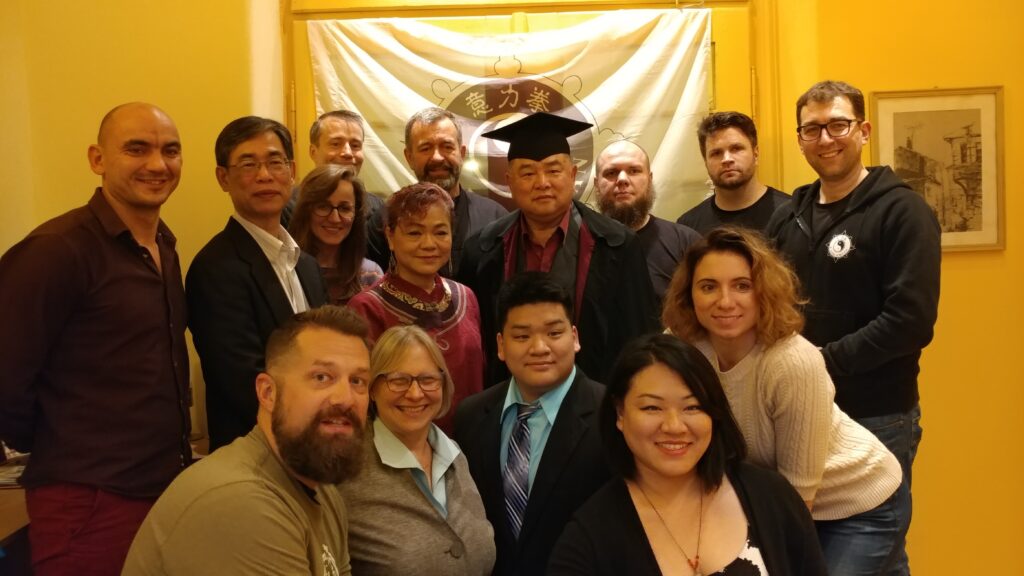
The author & students from around the world joined GM Sam Chin in Bulgaria as he received his Hon. Prof. Emeritus from the University of Plovdiv in recognition of his global contributions as a teacher.
Unique Partner Training Methods
I Liq Chuan’s training methods are more than mere exercises; they are rigorous explorations. Training methods like “spinning hands” and “sticky hands” are designed to mindfully study pressure, fullness, and finding the center systematically. They allow practitioners to delve deep into the mechanics of movement, exploring how the body reacts, adapts, and flows. While many styles of Chinese martial arts incorporate some type of “sticky hand” or “push hand” training, I Liq Chuan’s spinning hand and sticky hand training methods are unique in form and function. Spinning hand (轉手) training, inherited from the lost art of Ruyi Bagua, is absolutely singular. Through countless hours of “heavy spinning,” a good I Liq Chuan practitioner develops a distinctive quality, immediately recognizable on touch, that can be described as something akin to “liquid marble.” Dense, yet flowing. Immovable, yet responsive. Round outside, yet square within. And, while all drills work on particular skills in isolation, I Liq Chuan’s sticky hand training is very “free-style” compared to many equivalent methods, carrying over to real-time application organically.
Is the Proof in The Pudding?
When it comes to I Liq Chuan, a question might arise: If it’s so great, where are all the champions today? I Liq Chuan’s decidedly cognitive approach to the problem of hand-to-hand fighting is something of a double-edged sword in this regard. Although several of GM Chin’s students, including myself and Daria Sergeeva of Moscow, have won multiple full-contact fighting championships, that was already more than a decade ago, and I Liq Chuan has since steadily drawn an increasingly more cerebral audience, rather than rough young tigers eager to “bang.”
“We’re not training to be the best; we’re training to bring out the best in ourselves.” ~GM Sam FS Chin
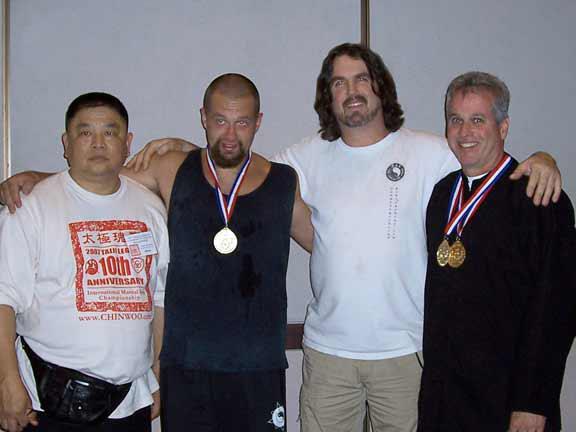
The author posing with GM Sam Chin and other I Liq Chuan students after winning the light-heavyweight division Taiji Legacy Tournament: 2008
Special forces operators receive the most advanced training in the world. However, candidates must undergo a rigorous selection process before undergoing training, weeding out all but the very best, ensuring consistency in physical capacity, mental resilience, and neuromuscular efficiency. This combination of selection and training results in the most tactically proficient elite fighting force the world has ever known, working with clockwork-like precision and reproducibility. Contrast this with civilian martial arts training, where the doors are open to all levels (and rightly so). The range of physical capacity leads to wide variation in input, reflecting each individual’s unique starting point. Despite this variation, a well-structured martial art like I Liq Chuan ensures a reliable process tailored to bring out the best in each person. Ultimately, combat effectiveness may vary, but the consistency and objective approach still allows for continuous personal improvement.
Today, GM Chin’s goal is not to create champions in the conventional sense, but to guide each practitioner to their own personal excellence. It’s about achieving the best possible outcomes for each individual, regardless of where they begin. It’s a martial art that recognizes the uniqueness of each person and provides a path to mastery that is as individual as it is universal. It’s a thoughtful, rigorous approach that reflects the true spirit of martial arts as a tool for self-improvement. Meanwhile, those of us who still value the combative aspects of the art patiently await the next generation of young tigers eager to sharpen their teeth and claws.
Conclusion
I Liq Chuan has emerged as a beacon of authenticity in the martial arts world, guided by the wisdom and innovation of GM Sam Chin. Once an obscure thread in the rich tapestry of martial traditions, this art has woven a global path, connecting the ancient with the modern. The essence of I Liq Chuan lies in its pursuit of awareness, not merely as a philosophical concept but as a tangible exploration of self. It’s a martial art that transcends techniques, offering a structured journey that unlocks the secrets of the old masters. The curriculum, a living embodiment of GM Chin’s insights, resonates with those seeking to understand movement, balance, and themselves. From its humble beginnings in Kuala Lumpur to its spread across the globe, I Liq Chuan’s growth has been nothing short of remarkable. The spark ignited by GM Chin’s arrival in the U.S. in 1992 has fueled a movement that transcends borders and cultures. I Liq Chuan has evolved into a living practice that speaks to the contemporary seeker through GM Sam Chin’s collaborations, dialogues, and continuous refinement. The integration of mindfulness, the emphasis on concrete observables, and the unique training methods make I Liq Chuan a transformative experience. In a world where martial arts can often be overshadowed by spectacle, I Liq Chuan stands as a reminder of the power of one man’s commitment to sharing his father’s art with the world and the potential of a well-crafted path. It’s a monument to a living legend’s vision and a practice that continues to inspire those who seek a deeper connection with themselves and the world around them.
About The Author
Ashe is a certified nutrition coach and martial arts instructor with over two decades of experience in the field. He holds a Master’s level certification in I Liq Chuan under Sam FS Chin, making him one of only several individuals worldwide to currently hold the title. He has taught classes and workshops worldwide. He currently lives in Tempe, AZ, where he teaches a small group of students. You can read additional articles about martial arts, fitness, and nutrition by Ashe HERE.

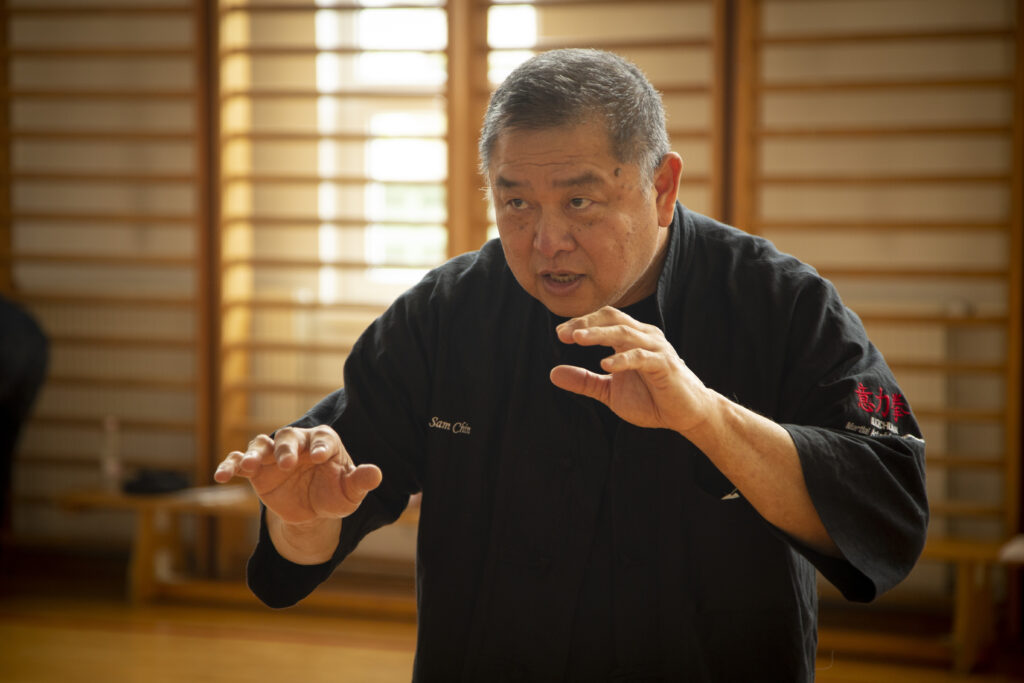
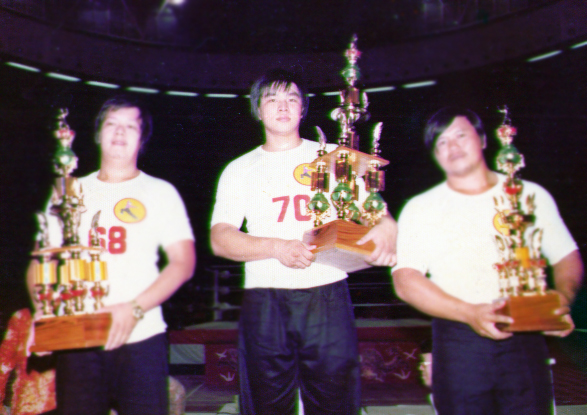


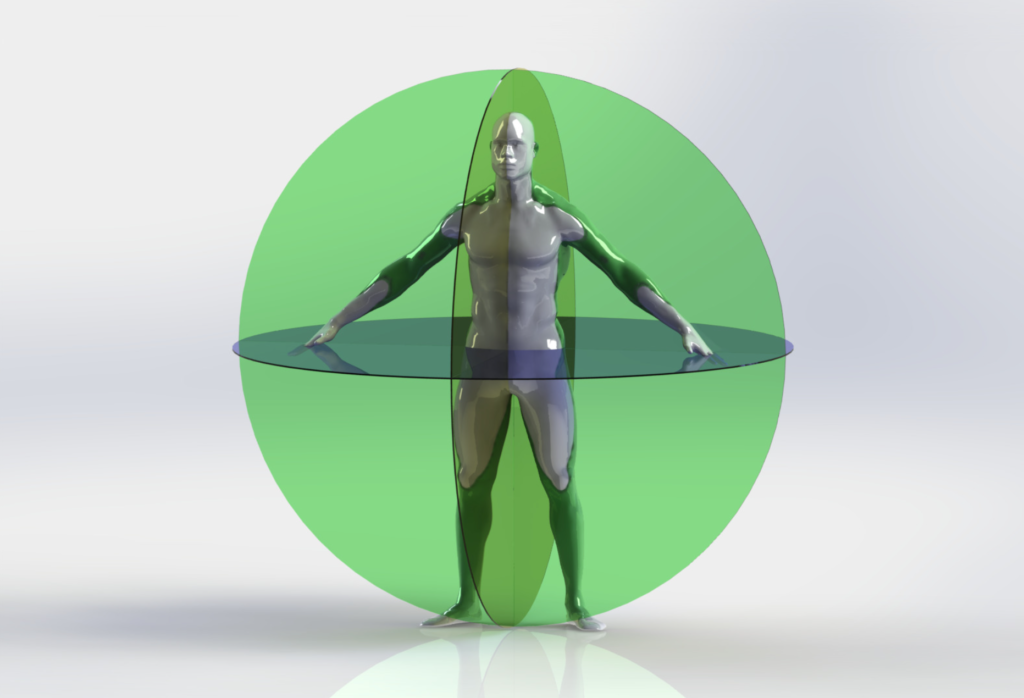
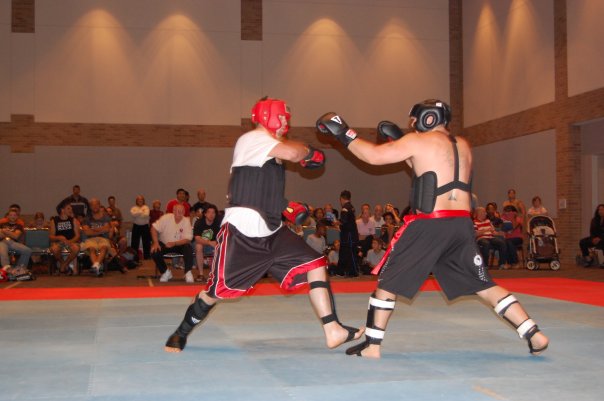
Leave a Reply
You must be logged in to post a comment.